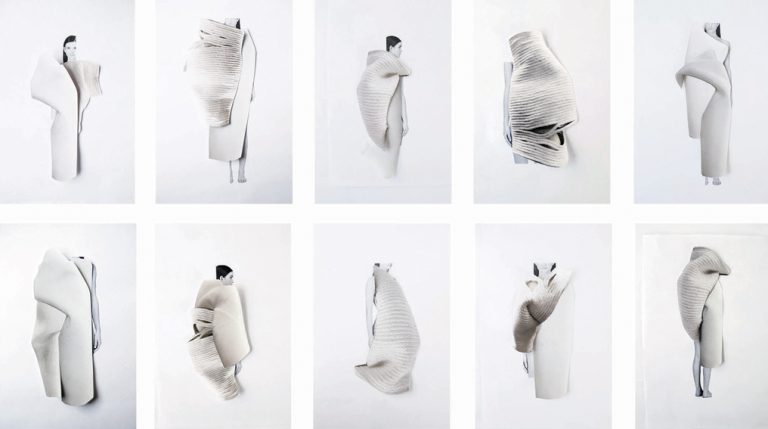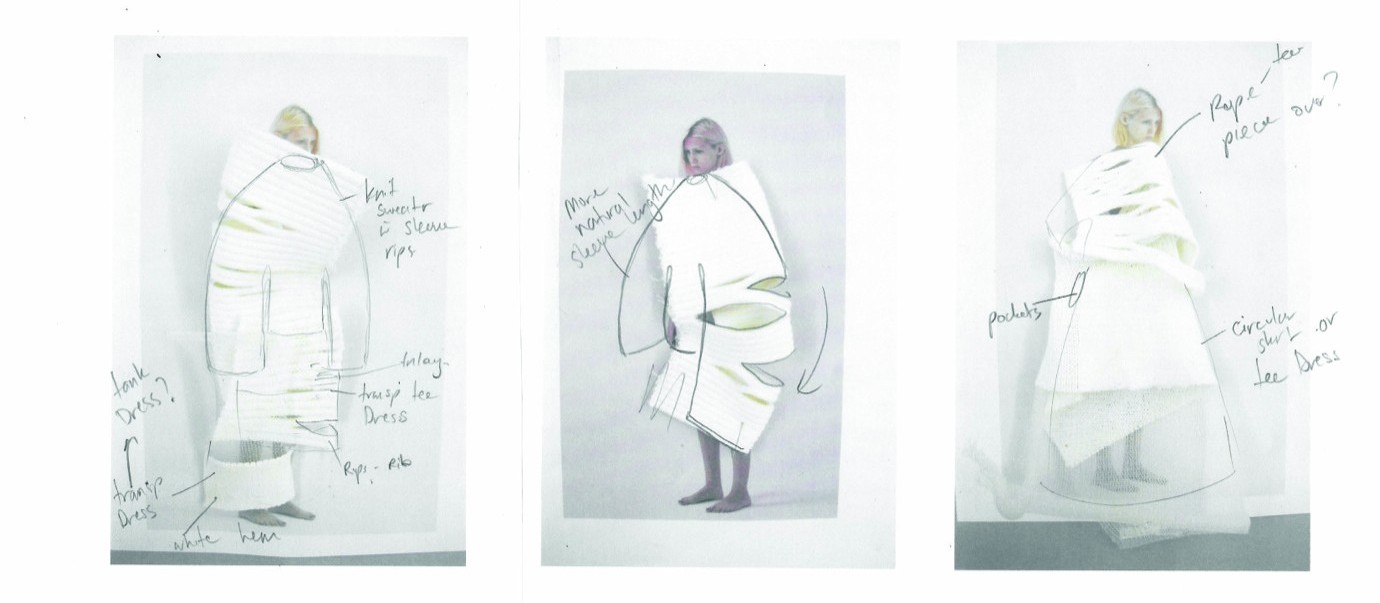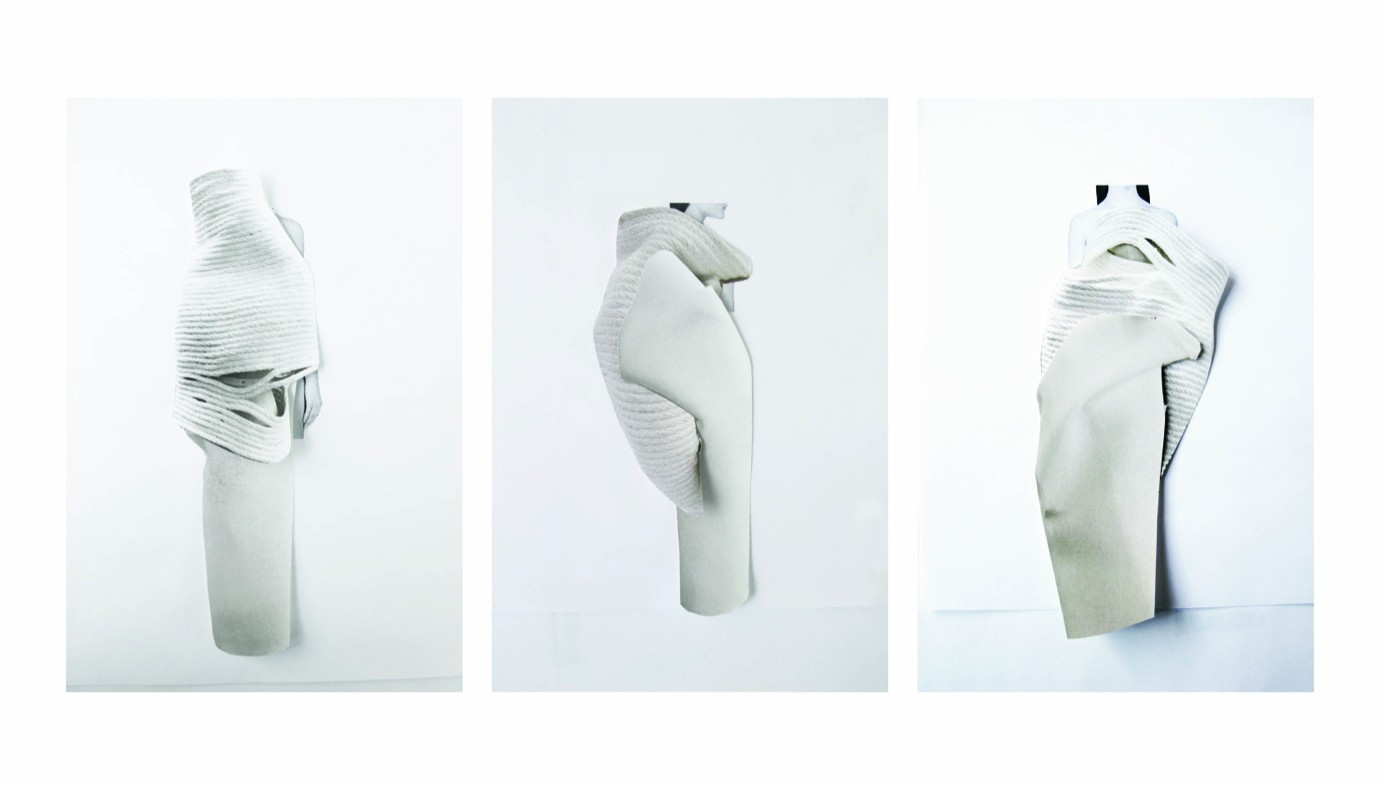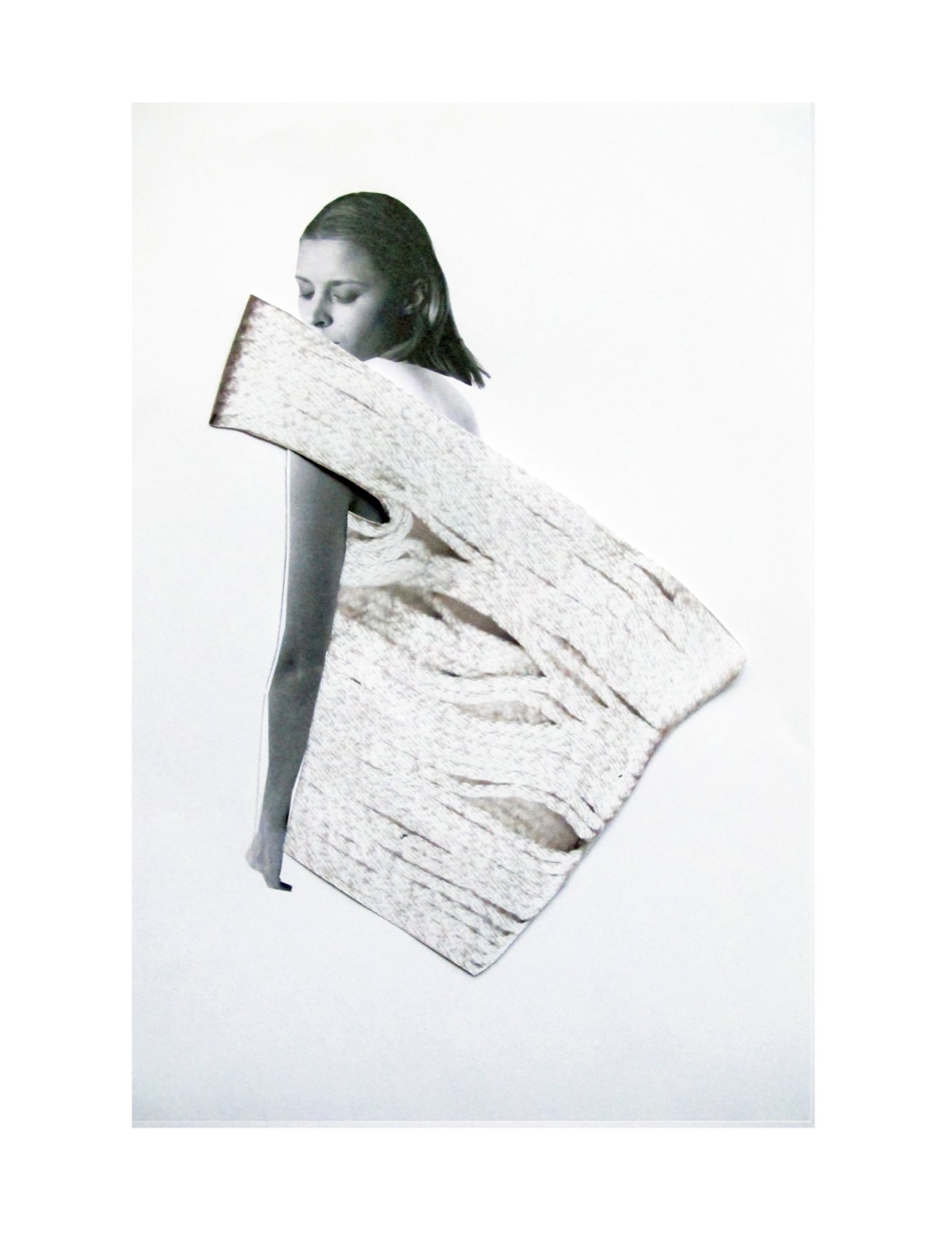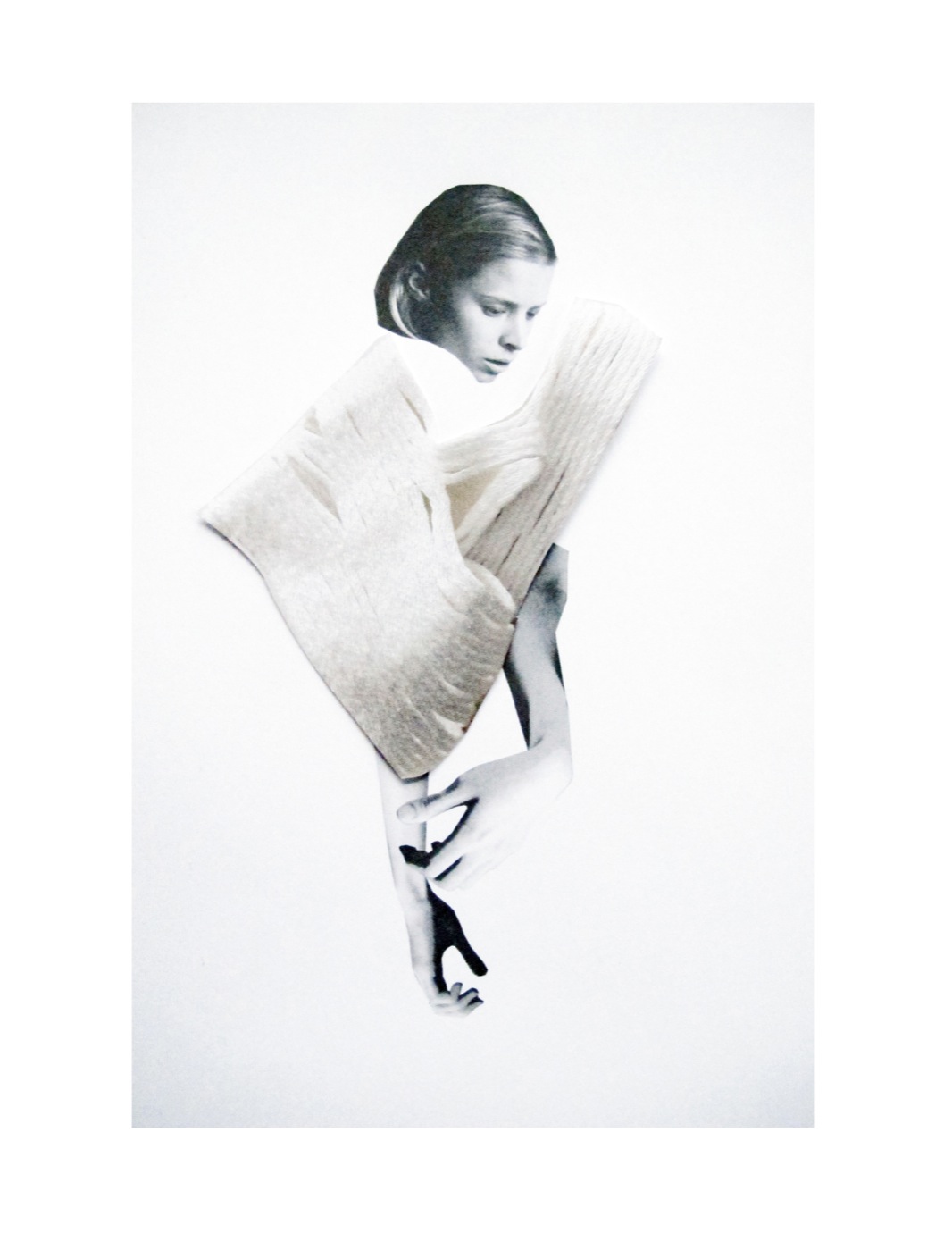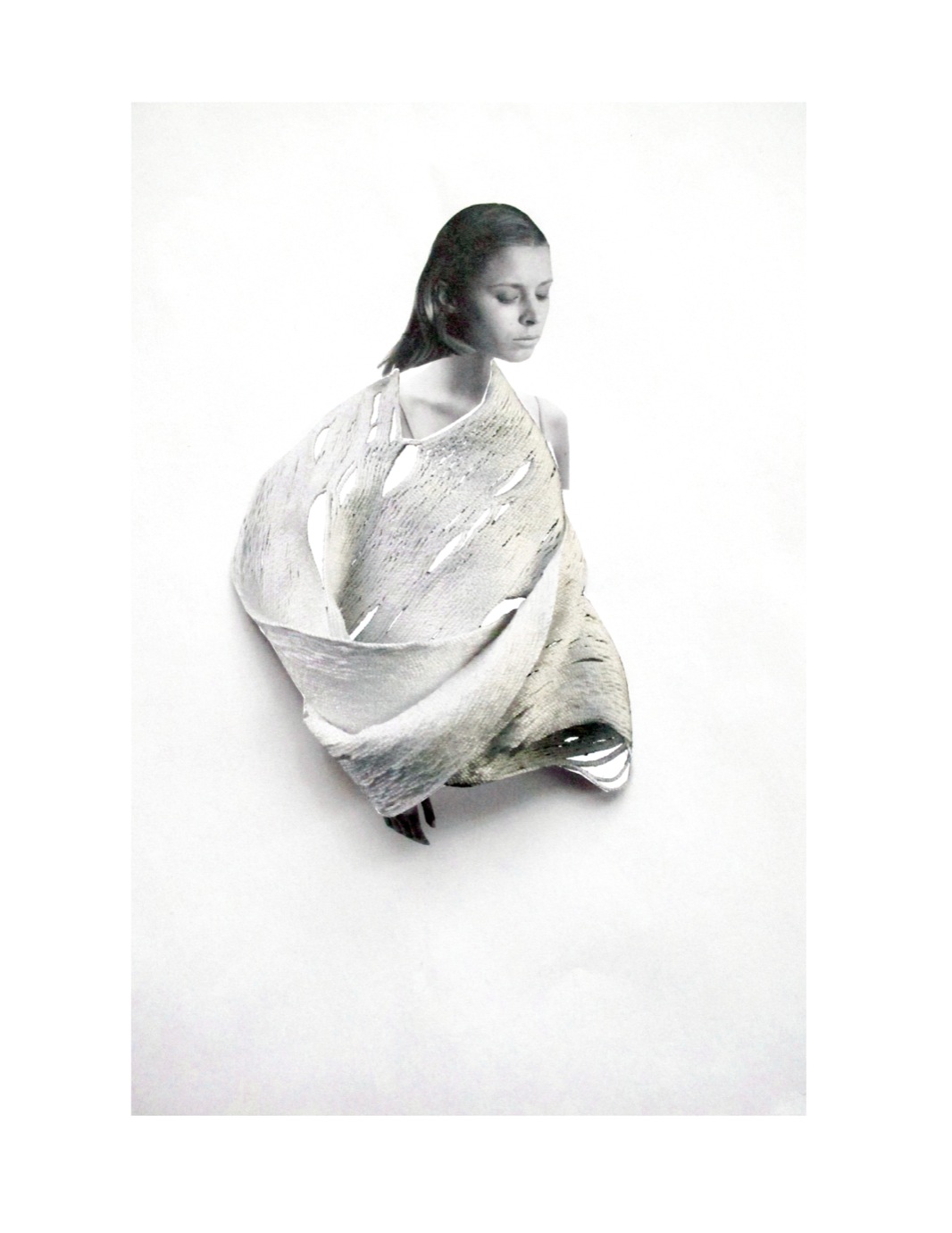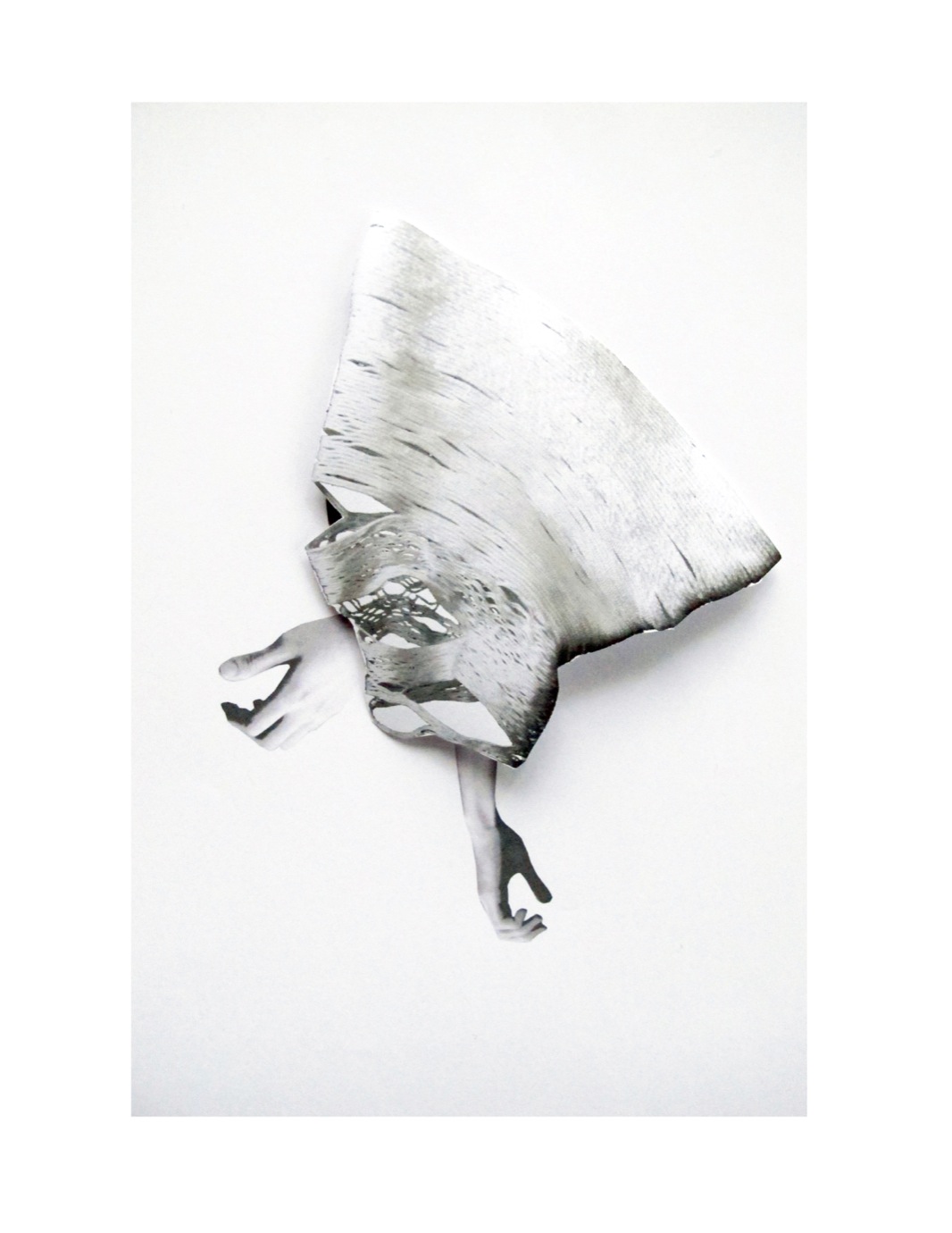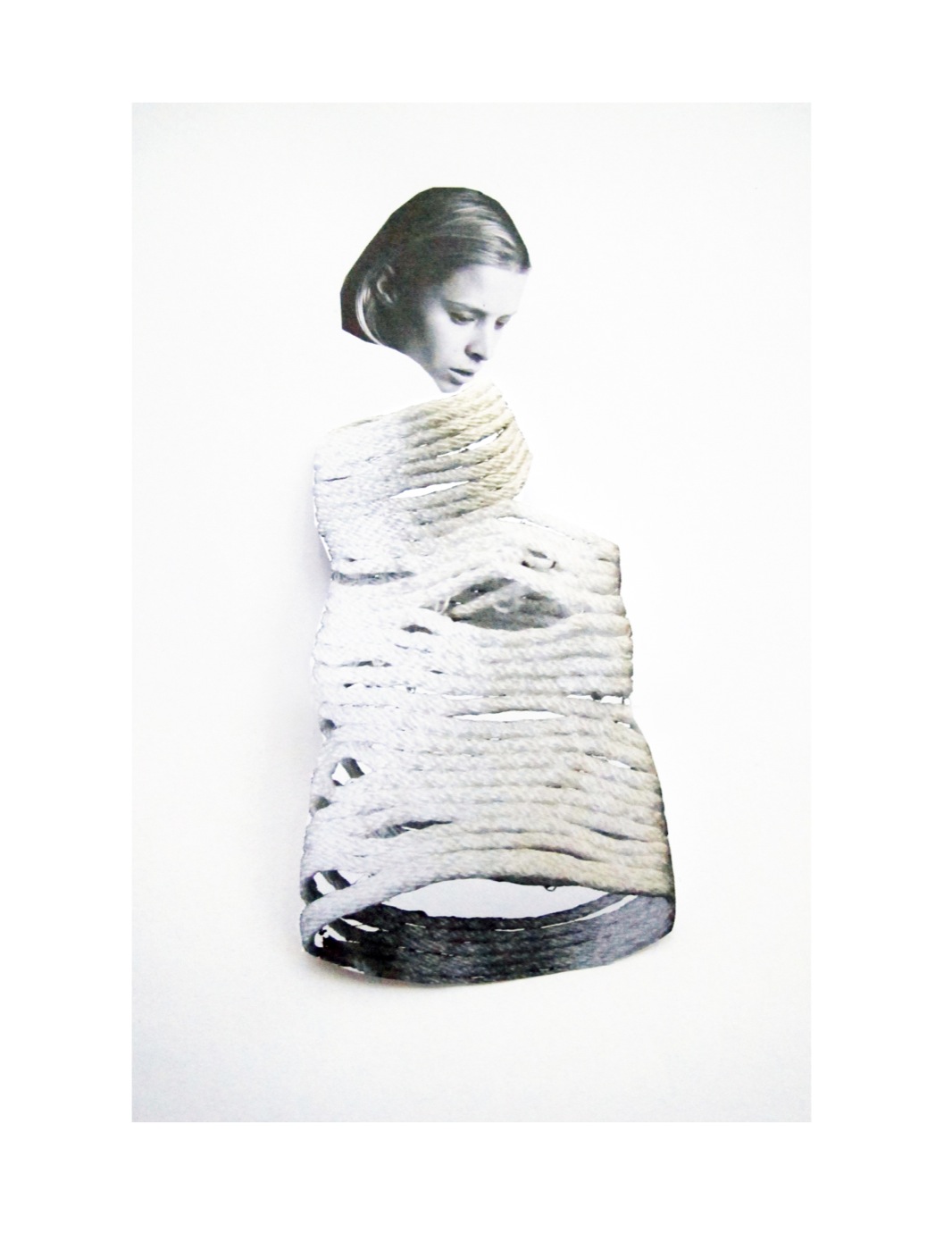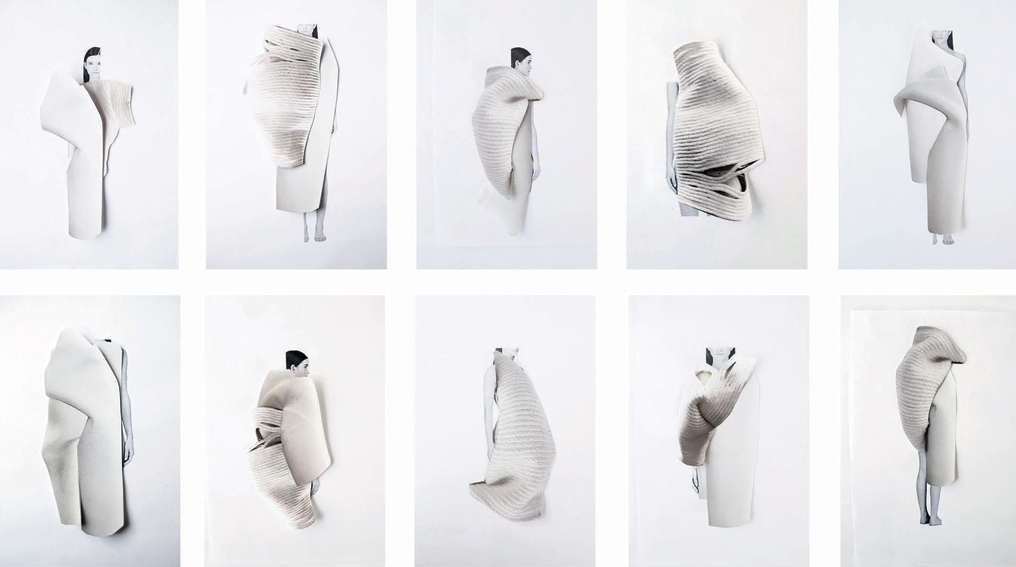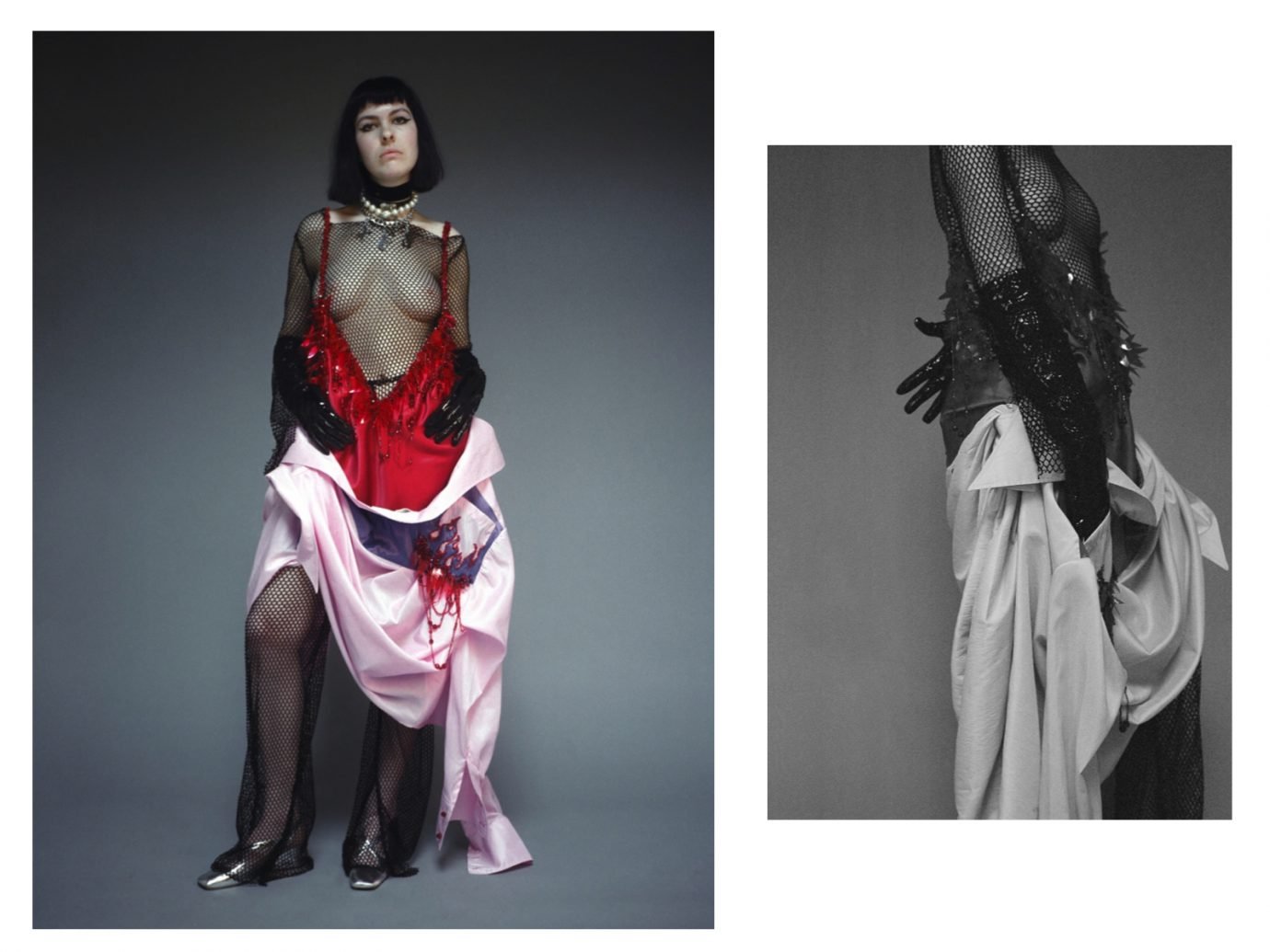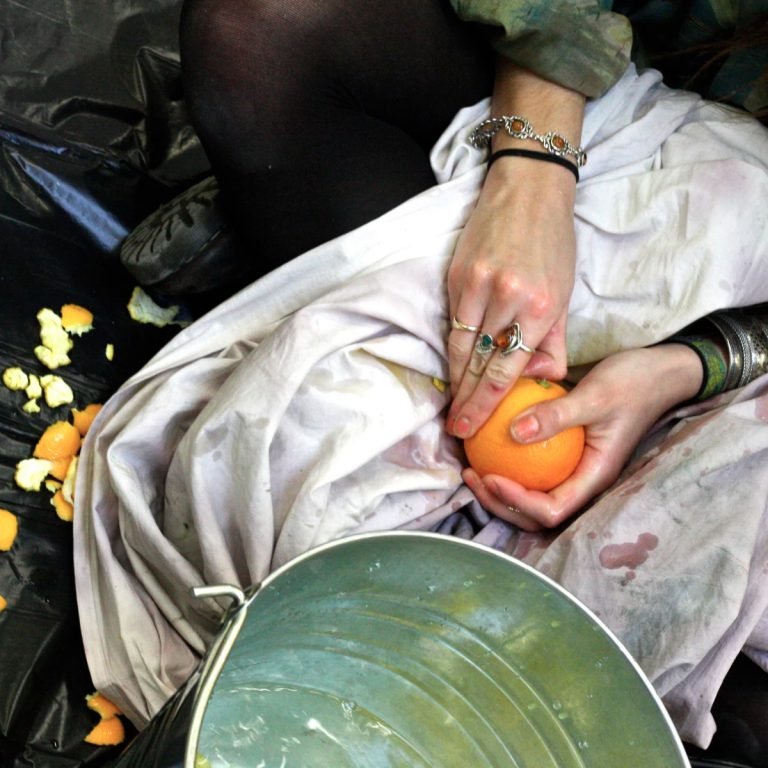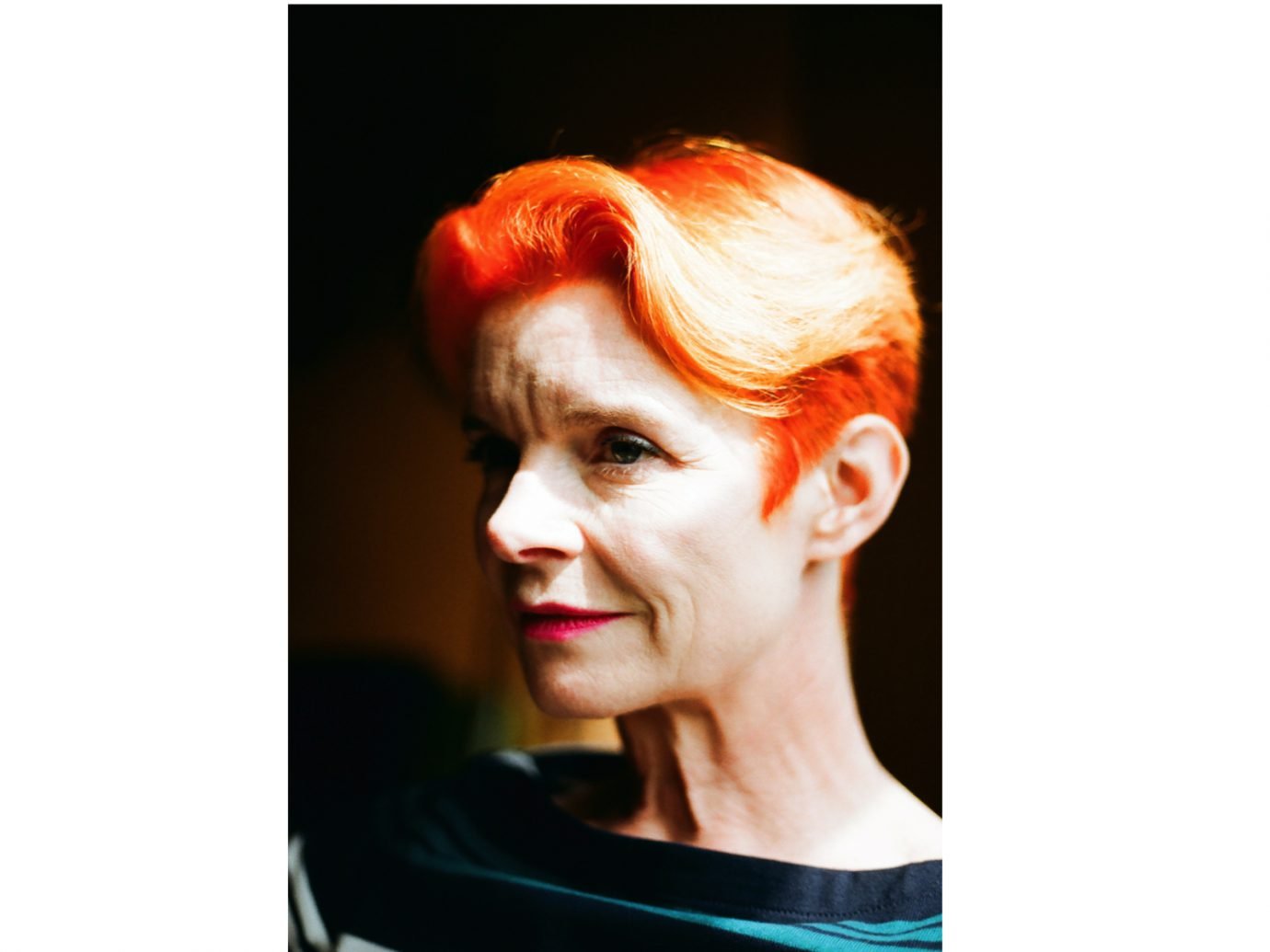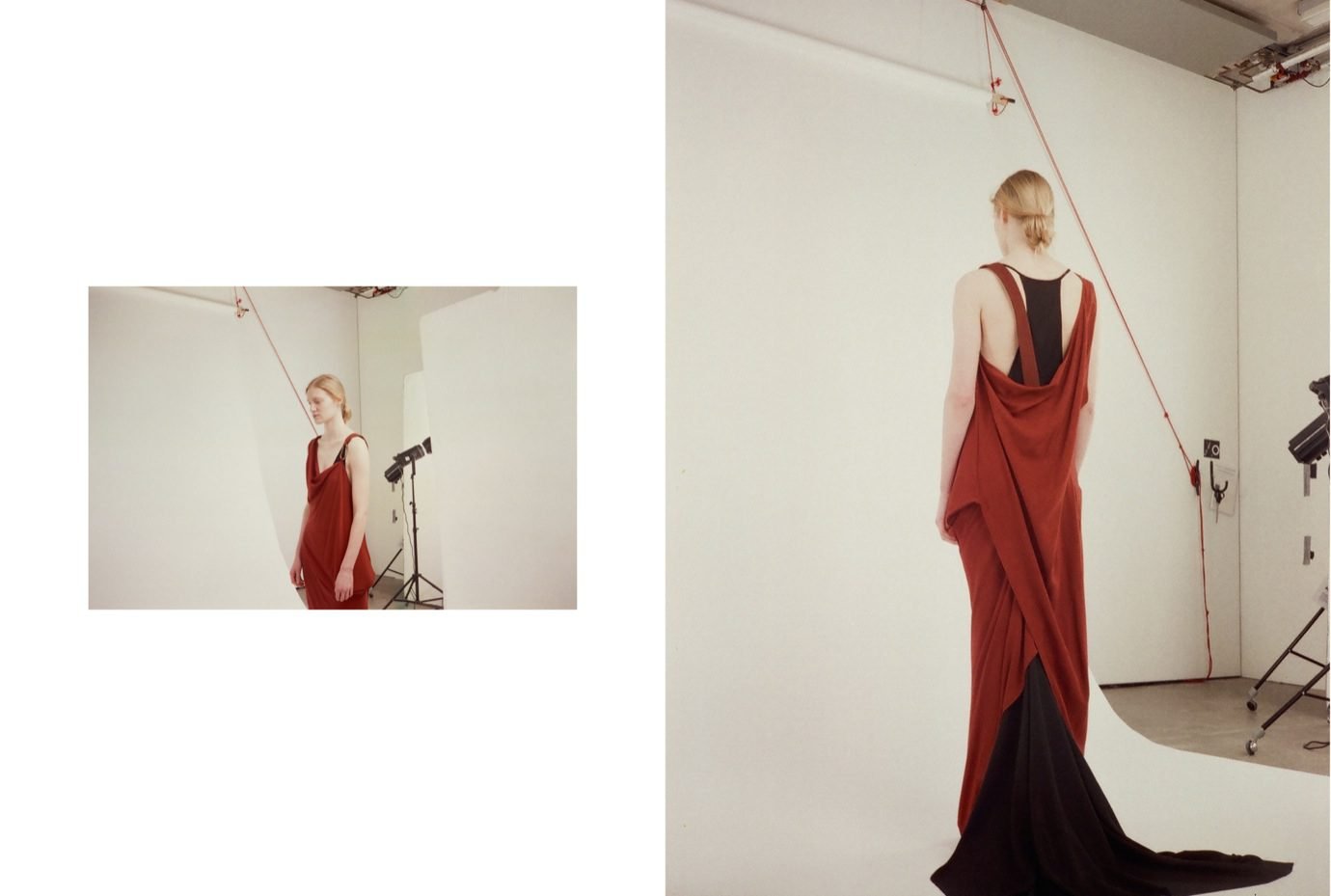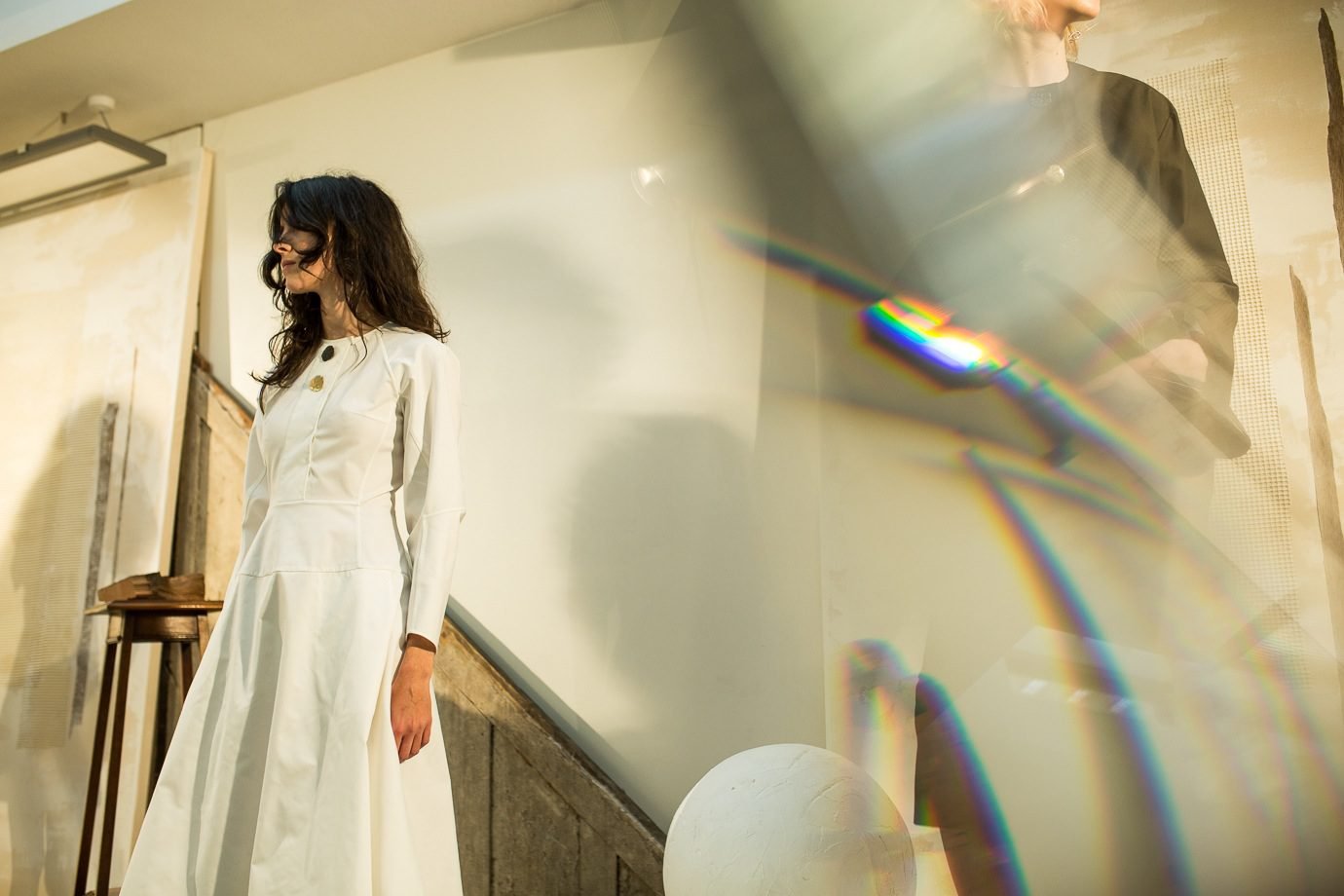“THEY ASPIRE TO EMPTINESS, THEREFORE ONE COULD SAY THAT THE BODY IS WITHIN THE VOID.”
In her photo series ‘Object’, her designs sit and stand amongst a plinth, suggestive of the remnants of Classical worship. The forms created by the folds of the fabric are arousing in their textural suggestion of natural sensuality, the shadows and silhouettes of human anatomy, untouched landscapes, even a post-coital mass of undress on the floor. In her second photo series ‘Cloth’, the process of beginning to acknowledge the human form is considered with the material objects juxtaposed alongside the designs on their proposed plinth, the human body. The curve and collapse of the shapes remain the same, proving of Mavridis’ primary approach to let the cloth dictate the silhouette.
Such shapes, textures and shadows are made possible by the knitted coiling technique developed during her time on the MFA programme. The foundations of her graduate collection lie in the examination of garments in their most reduced forms, ‘tubes of cloth (a pant leg, a sleeve, a body of a sweater) with holes (openings: a neckline, a cuff opening) and points of connection’. Thus, her designs are constructed from material tubes coiled into shape. Through her abject ignorance of clothing’s familiar forms, Mavridis has created disassociated silhouettes of unfamiliar proportions, openings and purposes; a sleeve hangs below the hip or extends to a horizontal perimeter or a waistline falls forward or sits awkwardly. All seamless, all endlessly bound. This prompts us to revise our understanding of the dichotomy of fashion and the body: what we find comfortable and what we find beautiful.
When asked about the role of gender in her work, Mavridis said that ‘my designs not only transcend gender, but transcend the body itself… They aspire to emptiness, therefore one could say that the body is within the void’, the void (empty space) cannot be as selective or dictactic towards gender or body types as the majority of contemporary fashion, so the emptiness beneath Mavridis’ designs is anything it can be; a universal body.

